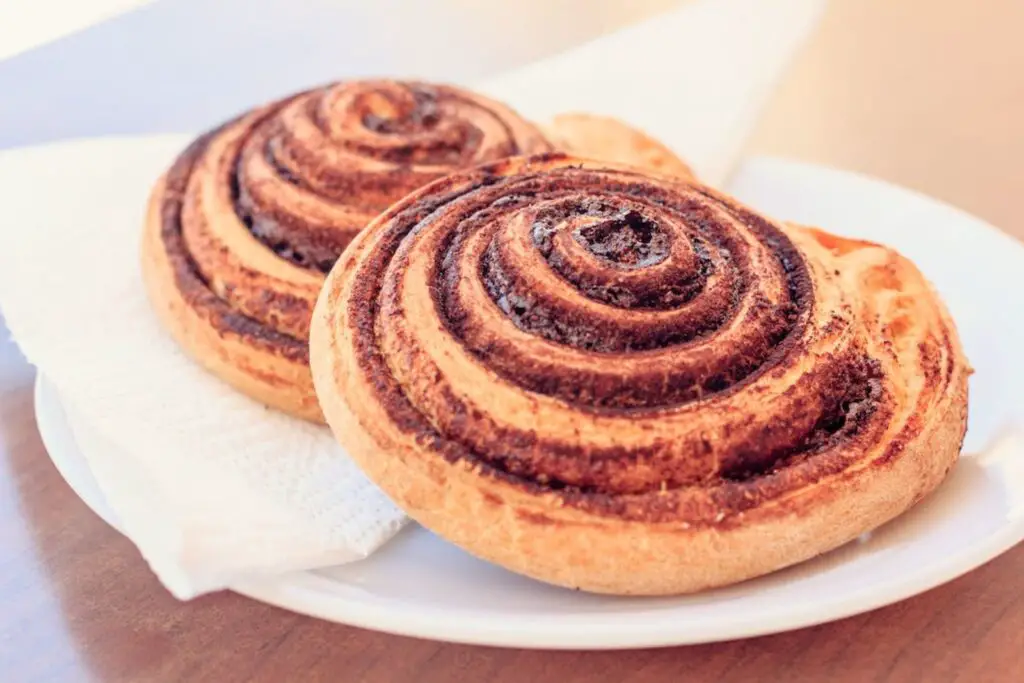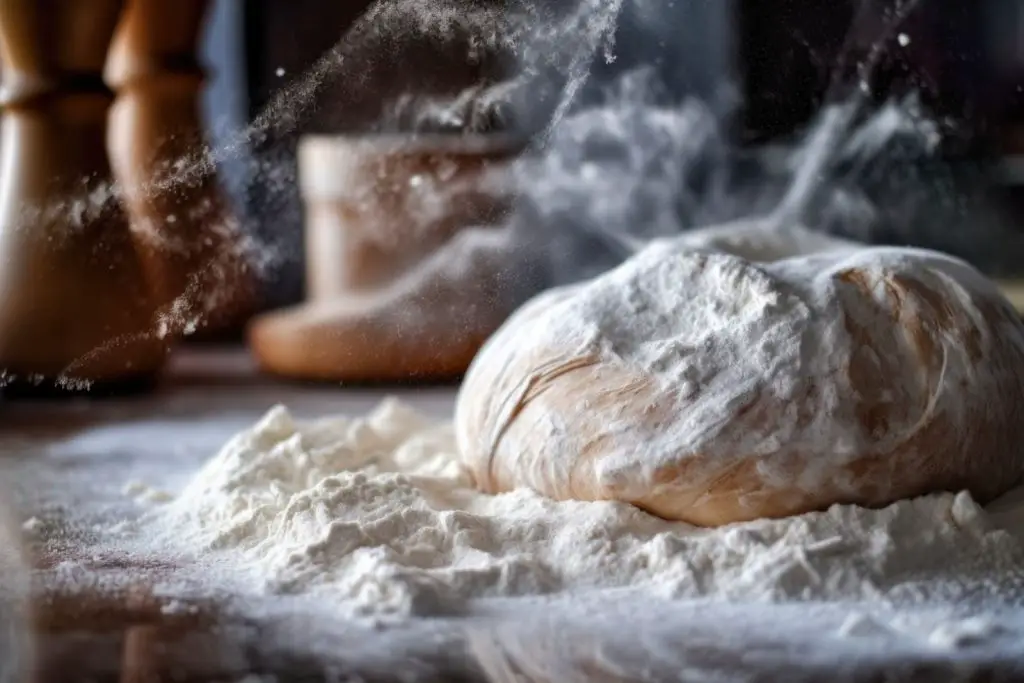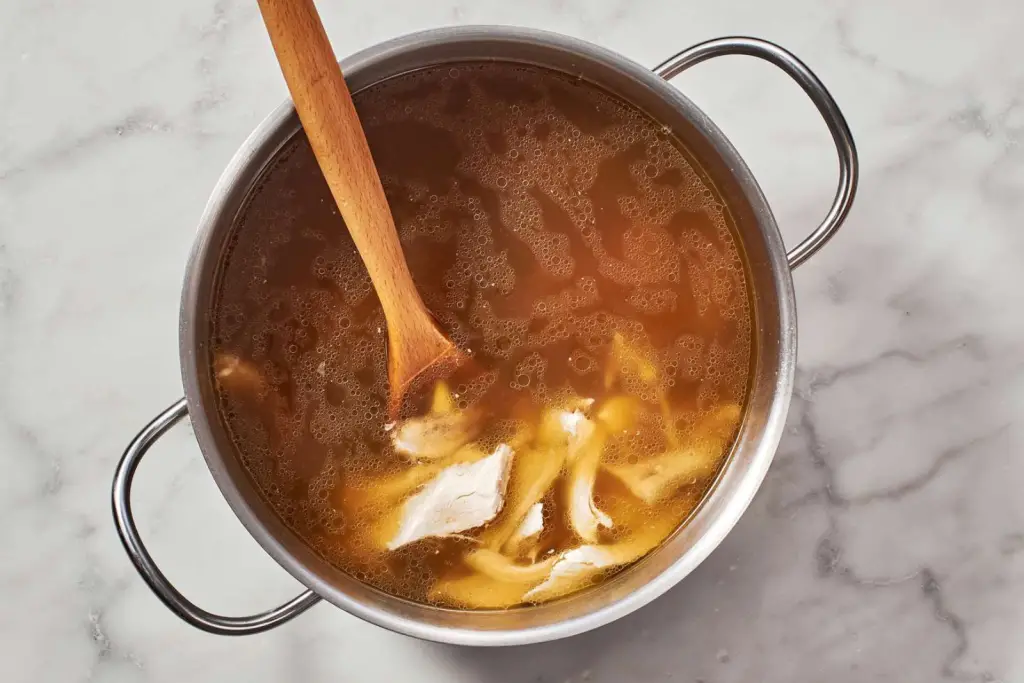
Macarons are delicate and delightful French confections known for their crispy outer shells and soft, chewy centers. These sweet treats come in a wide range of flavors and colors, making them a favorite among dessert enthusiasts. Whether you’ve made an excess of macarons or simply want to enjoy them at a later date, freezing is a great way to preserve their freshness and savor these delectable morsels whenever you desire. In this guide, we’ll take you through the steps to freeze macarons properly, ensuring they maintain their taste and texture for future indulgence.
Here’s a comprehensive guide on how to freeze macarons:
Step 1: Gather your macarons
To begin the process of freezing macarons, the first and foremost step is to gather the macarons you intend to preserve. It’s crucial to emphasize that the quality of the macarons you start with will largely determine the quality of the frozen result.
Whether you’ve just made a batch of these delicate French pastries or you’ve purchased them from a bakery, you should ensure that the macarons are in excellent condition. Freezing won’t magically enhance or improve the taste, texture, or appearance of macarons. Instead, it serves as a method for retaining their current state and freshness.
Here’s why it’s essential to begin with macarons in prime condition:
- Preservation, not Transformation: Freezing is primarily a preservation technique. It slows down the natural deterioration of food by inhibiting the growth of microorganisms and enzymes. However, it doesn’t reverse any negative changes that may have already occurred. If your macarons are stale or have lost their initial quality, freezing won’t make them taste or look better.
- Flavor and Texture: Macarons are beloved for their crisp exteriors and chewy, flavorful centers. If your macarons are already lacking in these attributes before freezing, they won’t magically regain them post-thaw. Therefore, it’s best to freeze macarons when they are at their freshest and most delightful.
- Avoiding Waste: Freezing is a convenient way to avoid wasting macarons. Perhaps you made a large batch for a special occasion, or you couldn’t resist a tempting offer at the bakery. In such cases, freezing allows you to enjoy these treats later, ensuring they don’t go to waste.
Step 2: Prepare an airtight container
Once you’ve gathered your macarons in prime condition, the next critical step in the process of freezing macarons is to choose the right container for storage. It’s essential to select an airtight container or a resealable freezer bag to protect your delicate pastries during their time in the freezer.
Here’s why this step is so important:
- Preserving Freshness: Macarons are incredibly sensitive to moisture and temperature fluctuations. They can easily absorb odors and lose their crispness if exposed to air or humidity. An airtight container or freezer bag creates a sealed environment, preventing moisture and air from infiltrating and compromising the quality of your macarons.
- Preventing Freezer Burn: Freezer burn occurs when moisture inside the food item evaporates and forms ice crystals on the surface. This can lead to the drying out and degradation of your macarons’ texture and taste. A well-sealed container or bag minimizes the risk of freezer burn by keeping the macarons protected from the freezer’s harsh conditions.
- Maintaining Shape and Presentation: Macarons have a delicate and intricate appearance, and you likely want to preserve their aesthetic appeal. Stacking macarons directly on top of each other can lead to damage and loss of their unique shapes and vibrant colors. An appropriately sized container allows you to store macarons in a single layer, helping them maintain their appearance.
- Easy Retrieval: Selecting a container or bag that fits your macarons without overcrowding ensures that they are easily accessible when you’re ready to enjoy them. You won’t need to wrestle with frozen macarons stuck together, which can lead to breakage.
When choosing between an airtight container and a resealable freezer bag, consider your preference and the quantity of macarons you’re freezing. Containers provide more protection against physical damage and are ideal for larger batches. On the other hand, freezer bags are space-efficient and great for smaller quantities.
Step 3: Layer with parchment paper
After selecting the suitable airtight container or freezer bag for your macarons, the next important step is to line it with parchment paper. This seemingly simple action serves a crucial purpose in ensuring that your macarons remain in perfect condition during the freezing process.
Here’s why layering with parchment paper is essential:
- Preventing Stickiness: Macarons have a tendency to become sticky when they come into contact with moisture or when they thaw. Parchment paper acts as a protective barrier between the delicate macarons and the container or bag’s surface, preventing them from adhering to it. This ensures that your macarons maintain their shape, texture, and appearance.
- Avoiding Sticking Together: When macarons are placed in close proximity, especially in a confined space like a container or bag, there’s a risk of them sticking together. This can lead to damage as they are separated, potentially ruining their delicate shells or fillings. Parchment paper creates a non-stick surface, reducing the chances of macarons fusing during freezing.
- Facilitating Easy Removal: Parchment paper also makes it easier to remove individual macarons when you’re ready to enjoy them. You can simply lift the parchment paper with the macarons on it, making it a breeze to take out just the quantity you desire without disturbing the rest.
- Maintaining Aesthetic Appeal: Macarons are not only cherished for their taste but also for their visual appeal. They come in an array of colors and often feature decorative elements. Parchment paper helps preserve the macarons’ appearance by preventing any potential smudging or color transfer that might occur if they were in direct contact with the container or bag.
Step 4: Arrange the macarons
Once you’ve prepared your chosen container or freezer bag by lining it with parchment paper, the next step is to carefully arrange your macarons on the parchment paper. This step is crucial to ensure that your macarons freeze without any damage and maintain their individual integrity.
Here’s why arranging the macarons in a specific manner is essential:
- Preventing Contact: Macarons are delicate, and their soft, flavorful centers can easily stick to each other when they come into contact. Placing them in a single layer on the parchment paper ensures that they have adequate space and do not touch each other. This prevents potential damage to the macarons’ shells or fillings during freezing and thawing.
- Maintaining Shape: Macarons come in various shapes, often with distinct patterns or designs on their tops. By arranging them with some distance between each one, you help maintain the individual shapes and decorative elements of each macaron. This is especially important if you want to showcase their aesthetic appeal when serving.
- Even Freezing: Proper spacing allows for even freezing of each macaron. When macarons are too close together, the cold air in the freezer may not circulate around them effectively, resulting in uneven freezing and potential texture changes.
- Layering with Parchment: If you’re storing a large quantity of macarons or need to stack them in the container, consider placing a sheet of parchment paper between layers. This additional parchment layer acts as a protective barrier, preventing the macarons in one layer from pressing against those in the layer below. It’s especially useful if you want to maximize freezer space while keeping your macarons pristine.
Step 5: Seal the container or bag
With your macarons neatly arranged on parchment paper in your chosen container or freezer bag, the next critical step is to seal the container or bag securely. Proper sealing is essential for preserving the quality and flavor of your macarons during their time in the freezer. Here’s why this step is so important:
- Preventing Freezer Burn: Freezer burn occurs when moisture in the food evaporates and then refreezes on the surface as ice crystals. This process can result in a deterioration of both texture and flavor. A tight seal on the container or bag minimizes the amount of air inside, reducing the chances of freezer burn affecting your macarons.
- Maintaining Freshness: Macarons are known for their delicate and distinct flavors, and any exposure to the freezer’s dry, cold air can compromise that flavor over time. An airtight seal creates a protective barrier, preventing the loss of moisture and flavor, and helps your macarons stay fresh for a longer period.
- Preventing Odor Transfer: Freezers can sometimes retain strong odors from other foods, which can be absorbed by macarons if they are not properly sealed. An airtight seal not only keeps the macarons safe from odor contamination but also preserves their own flavors and aromas.
- Protecting Texture: Excess air in the container or bag can lead to uneven freezing and potential texture changes in your macarons. A tight seal ensures a consistent, controlled environment for freezing, helping your macarons maintain their desired texture.
To achieve a proper seal, make sure you remove as much air as possible from the container or bag before closing it. For containers with lids, press the lid down firmly to ensure a tight seal. For freezer bags, press out excess air while sealing and consider using double bags for an added layer of protection.
Step 6: Label and date
As you seal your container or freezer bag filled with carefully arranged and protected macarons, it’s crucial not to overlook the importance of labeling and dating. Proper labeling serves as a practical reference point and ensures that you can enjoy your frozen macarons at their best quality. Here’s why this step is essential:
- Tracking Freshness: Macarons, like many frozen foods, have a limited storage life in the freezer. Labeling and dating your container or bag allow you to keep track of how long your macarons have been stored. This information is crucial for ensuring that you consume them while they are still at their peak quality.
- Avoiding Freezer Burn: By noting the date of freezing, you can monitor the recommended storage time for macarons. Freezer burn becomes more likely as storage duration extends beyond the recommended timeframe, potentially impacting the texture and flavor of your macarons.
- Easy Selection: If you have multiple containers or bags of frozen macarons or other items in your freezer, labeling and dating make it simple to identify and select the ones you want to thaw and enjoy. It prevents the need to open containers or bags to check their contents, which could expose the macarons to temperature fluctuations.
- Efficient Rotation: Labeling and dating help you practice good freezer organization and rotation. You can prioritize consuming the oldest batches of macarons first, ensuring that nothing goes to waste and that you’re consistently enjoying the best quality macarons.
Regarding storage duration, macarons can be stored in the freezer for up to two to three months for optimal quality. While they may remain safe to eat beyond this timeframe, their texture and flavor may gradually deteriorate, making it advisable to consume them within this period.
Step 7: Freeze
After carefully arranging and sealing your macarons in their container or freezer bag, the next step is to place them in the freezer. While this might seem self-explanatory, there are some important considerations to ensure that your frozen macarons maintain their quality during storage. Here’s why this step is crucial:
- Maintaining Freshness: The freezer is where the magic of preservation happens. Freezing slows down the natural degradation of food by inhibiting the growth of microorganisms and the action of enzymes. Placing your macarons in the freezer at the appropriate temperature ensures that they remain fresh and safe to eat until you’re ready to enjoy them.
- Preventing Damage: When placing your macarons in the freezer, take care to ensure they are not crushed or disturbed. Macarons are delicate, and their delicate shells can easily crack or break if subjected to pressure or movement. By handling them gently and placing them in a secure spot, you protect their shape and appearance.
- Even Freezing: Positioning the container or bag in a way that allows for even airflow is important. Proper airflow ensures that the freezer’s cold air circulates around your macarons uniformly. This helps maintain their texture and prevents any localized freezing or condensation that could affect their quality.
- Avoiding Odor Transfer: Be mindful of where you place your macarons in the freezer. Avoid storing them near strong-smelling foods, as macarons can absorb odors easily. Using a designated section or shelf for delicate items like macarons can help prevent unwanted flavor contamination.
Remember that the ideal freezer temperature for storing macarons is typically around 0°F (-18°C). This temperature ensures that your macarons remain well-preserved and maintain their taste and texture.
How long can macarons last in the freezer?
Macarons can last in the freezer for up to two to three months while maintaining their optimal quality. Proper packaging and storage at a temperature of around 0°F (-18°C) are crucial to ensure their freshness and taste remain intact during this period. Beyond three months, macarons may still be safe to eat, but their texture and flavor may gradually deteriorate.
Step 8: Thaw and enjoy
After the patient wait while your macarons have been safely stored in the freezer, the moment arrives when you’re ready to indulge in these delightful treats. However, it’s crucial to know the proper method for thawing to ensure that your macarons regain their original texture and flavor. Here’s why this step is essential:
- Texture Restoration: Macarons have a delicate balance of crispy exteriors and soft, chewy centers. Improper thawing can affect this balance. Thawing in the refrigerator or at room temperature allows the macarons to slowly come back to their desired consistency, preventing any abrupt textural changes that might occur with faster thawing methods.
- Flavor Preservation: Macarons are prized for their distinct flavors, often featuring various fillings and nuances. Thawing at a controlled pace helps preserve these flavors by preventing any rapid temperature fluctuations that could alter the taste.
Here’s how to properly thaw your frozen macarons:
- Refrigerator Thawing: This is the preferred method for achieving the best results. Remove the container or bag of macarons from the freezer and place them in the refrigerator. Allow them to thaw for a few hours or overnight. The slow, gentle thawing in the refrigerator helps maintain the macarons’ texture and flavor.
- Room Temperature Thawing: If you’re in a hurry or can’t wait for several hours, you can thaw macarons at room temperature. Take them out of the freezer, remove them from the container or bag, and place them on a plate or tray. Allow them to sit at room temperature for about 15-30 minutes. This method is quicker but may result in slightly softer macarons compared to refrigerator thawing.
Avoid using a microwave or oven for thawing macarons, as the sudden bursts of heat can cause them to become overly soft, lose their shape, or develop an uneven texture. The gradual thawing methods described above are the best choices for preserving the integrity of your frozen macarons.
Other related questions
Can I refreeze macarons?
It is not advisable to refreeze macarons once they have been thawed. The process of freezing and thawing can affect their texture and flavor, and refreezing may further compromise their quality. To enjoy macarons at their best, it is recommended to consume them after the initial thaw without subjecting them to additional freeze-thaw cycles.
How do I know if the macarons have gone bad after being frozen?
Macarons that have gone bad after freezing may exhibit signs of freezer burn, such as dry, discolored, or crystallized areas on the surface. Additionally, if they develop an off-putting odor or an unusual taste, it is an indication of deterioration. Properly stored macarons should maintain their original quality, and any significant deviations from their usual appearance, texture, or flavor may suggest spoilage.
Can I freeze macarons with various fillings, such as ganache or buttercream?
Yes, you can freeze macarons with a variety of fillings. However, keep in mind that the texture of the filling may change slightly after freezing and thawing. Ganache and buttercream fillings tend to freeze well, but fruit fillings or other highly perishable options may not fare as well.
Can I freeze macarons that have been filled with perishable ingredients like fresh fruit or whipped cream?
Macarons filled with perishable ingredients may not freeze as well as those with stable fillings. The filling can change in texture and may become watery upon thawing. It’s advisable to opt for fillings that freeze more successfully if you plan to store macarons in the freezer.
Can I freeze macarons with different flavors together in the same container or bag?
While it’s possible to freeze macarons with different flavors together, keep in mind that flavors may mix slightly if not properly sealed. To maintain their individual tastes, consider separating flavors with parchment paper or storing them in separate containers or bags.
Can I freeze macarons that have decorative edible elements, like edible glitter or gold leaf?
Freezing macarons with edible decorations may alter the appearance of these elements slightly, but it’s generally safe to do so. Ensure the macarons are well-sealed to prevent moisture from affecting the decorations, and be prepared for potential visual changes upon thawing.
Can I freeze macarons that have been dusted with powdered sugar or cocoa powder?
Yes, macarons dusted with powdered sugar or cocoa powder can be frozen. Ensure they are properly sealed to prevent moisture absorption, and consider a gentle dusting post-thaw if needed for appearance.








